The pledge drive continues. If you haven’t subscribed, consider doing it now. It won’t take long. This site operates on the public radio model. It is free, but it can only continue if enough of you subscribe and renew. If you haven’t subscribed, now would be a good time to do that.
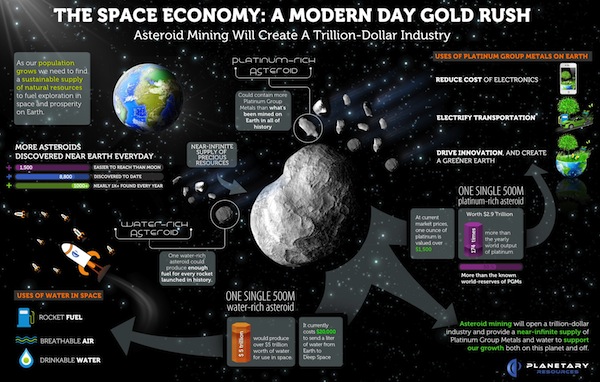 We are getting close to that future of Asteroid Mining predicted in High Justice (1974), Exiles to Glory (1977) and Higher Education (with Charles Sheffield). You might want to keep an eye on the Series A rounds for Deep Space Industries and Planetary Resources if you’re looking to get rich.
We are getting close to that future of Asteroid Mining predicted in High Justice (1974), Exiles to Glory (1977) and Higher Education (with Charles Sheffield). You might want to keep an eye on the Series A rounds for Deep Space Industries and Planetary Resources if you’re looking to get rich.
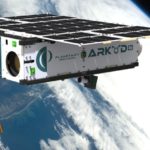 In Dr. Pournelle’s stories and the essays of A Step Farther Out, pioneering individuals earn a living in space, mining massive quantities of rare earth metals located just beyond Jupiter — using sintering and centrifuge. To claim platinum, magnesium silicate, aluminum, iron silicate, hydrogen, ammonia, nitrogen and yes even, gold; both man and machine go out to the other planets. (Sintering or frittage is the process of compacting and forming a solid mass of material by heat or pressure without melting it to the point of liquefaction)
In Dr. Pournelle’s stories and the essays of A Step Farther Out, pioneering individuals earn a living in space, mining massive quantities of rare earth metals located just beyond Jupiter — using sintering and centrifuge. To claim platinum, magnesium silicate, aluminum, iron silicate, hydrogen, ammonia, nitrogen and yes even, gold; both man and machine go out to the other planets. (Sintering or frittage is the process of compacting and forming a solid mass of material by heat or pressure without melting it to the point of liquefaction)
The prospect of asteroid mining, long the stuff of science fiction, is now being likened to a 21st-century gold rush. There’s a quest for resources among the stars, and asteroids are the prime targets, either for the metals they contain that could influence Earth-bound commodity markets, or for the water inside them that can be distilled into rocket fuel for future missions into deep space. Two of the leading companies in the field have been operating for several years already: Deep Space Industries, based in Mountain View, California, and Planetary Resources, based in Redmond, Washington. Unlike the days of the Apollo missions, this new generation of exploration is being led by a private sector interested in going boldly into space and in making money.
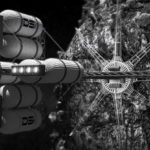 That’s where the tiny country of Luxembourg sees an opportunity to play host to entrepreneurs and start-ups with their sights on space, becoming the worldwide hub of the space mining industry in the process. Private space exploration is a brand new market with trillions of dollars in potential; the Federal Aviation Administration expects space tourism to be a $1 billion sector over the next several years. Meanwhile, noted experts like Neil deGrasse Tyson has said that the world’s first trillionaire “will be the person who exploits the mineral content of metallic asteroids.”
That’s where the tiny country of Luxembourg sees an opportunity to play host to entrepreneurs and start-ups with their sights on space, becoming the worldwide hub of the space mining industry in the process. Private space exploration is a brand new market with trillions of dollars in potential; the Federal Aviation Administration expects space tourism to be a $1 billion sector over the next several years. Meanwhile, noted experts like Neil deGrasse Tyson has said that the world’s first trillionaire “will be the person who exploits the mineral content of metallic asteroids.”
Asteroids, floating pieces of rock and metal that predominate between Mars and Jupiter, are veritable treasure chests, packed with gold, platinum, and alloys that are needed to produce modern technologies such as smartphones.
“Our goal is to put into place an overall framework for the exploration and commercial use of resources from ‘celestial bodies’ such as asteroids, or from the moon,” said Etienne Schneider, Luxembourg’s Deputy Prime Minister and Minister of the Economy.
Tax haven for space ventures
Sandwiched by Germany, Belgium, and France, the country with a population of 582,000 and a per capita GDP of just over $101,000 is stable and largely politically neutral. Historically, it was a steel producer, but in more recent decades it is better known for private banking, low taxes, and, sometimes to the country’s chagrin, as a tax haven; multinational companies use tiny Luxembourg for corporate tax avoidance much in the same way they use one of its neighbors, the Netherlands.
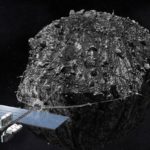 An adventurous and unproven enterprise like space mining requires the financial backing, legal frameworks, and favorable regulatory structures that allow the work to even take place. Luxembourg has expertise in that area, given its experience in the mid-1980s with the commercial satellite industry. Up until that decade, satellites in space were government-funded or government-mandated. That changed in the 1980s, and Luxembourg led the charge in the satellite communications industry when it launched Société Européenne des Satellites in 1985. Otherwise known as SES, it was Europe’s first private satellite operator; today, Luxembourg’s SES is the world’s second-biggest commercial satellite operator.
An adventurous and unproven enterprise like space mining requires the financial backing, legal frameworks, and favorable regulatory structures that allow the work to even take place. Luxembourg has expertise in that area, given its experience in the mid-1980s with the commercial satellite industry. Up until that decade, satellites in space were government-funded or government-mandated. That changed in the 1980s, and Luxembourg led the charge in the satellite communications industry when it launched Société Européenne des Satellites in 1985. Otherwise known as SES, it was Europe’s first private satellite operator; today, Luxembourg’s SES is the world’s second-biggest commercial satellite operator.
“Smaller countries can really make a big impression if they focus,” said Peter Stibrany, chief strategist at Deep Space Industries, a VC-backed company seeking to process materials mined from asteroids wholly in space. “Luxembourg focused on satellite communications and made a huge success of it, and now they’re focused on asteroid mining.”
Both companies predict that as soon as the mid-2020s, water, hydrogen, oxygen, and precious metals will be able to be extracted, processed, and utilized, either as fuel for deep-space missions to Mars and beyond, or as commodities on Earth. A Goldman Sachs research report published last year noted that mining asteroids “could be more realistic than perceived,” and cited figures from Planetary Resources calculating that the platinum found on an asteroid the size of one football field is worth anywhere between $25 billion and $50 billion.
The mechanics of actually mining an asteroid are still being worked out, but companies like Deep Space Industries envision a future where robotic harvesting spacecraft touch down on an asteroid’s surface — already resource-mapped by tiny prospecting satellites — and extract the materials contained inside.
Government support
Perhaps even more important than the funding is the regulatory structure Luxembourg has set up. In 2017 it became the first European country to pass a law conferring to companies the ownership of any resources they extract from space. The U.S. has a similar law for commercial space exploration, the Commercial Space Launch Competitiveness Act, which became law in 2015. But while the U.S. law applies solely to people and companies that count as citizens, Luxembourg’s law applies to any company with a Luxembourg address.
Luxembourg’s jump into asteroid mining has drawn criticism. Speaking to The Guardian last September, UC Berkeley assistant professor of economics Gabriel Zucman — who studied under French economist Thomas Piketty — said Luxembourg’s strategy of creating laws and making room for asteroid mining companies “is what being an offshore financial center means. It’s not diversification. It’s just extending the logic of being a tax haven to a new area.”
In other words, Luxembourg isn’t necessarily jumping into modern technology with its support of space mining — it’s just pushing into a new industry to extend the laws of a terrestrial tax haven, safeguarded by a sovereign nation, to the land of E.T.
But Luxembourg shows no signs of slowing its movement into asteroid mining. Deputy Prime Minister Schneider said the country has “several more tools to further support and enable commercial space entities and space resources companies.” Forthcoming is a homegrown space agency with an investment fund supported by the government and venture capitalists. And Schneider has already said Luxembourg is prepared to reimburse asteroid mining companies up to 45 percent of their R&D costs.
Asteroid mining companies will take all the help they can get.
“These things are not all in place yet. There’s continuing work to make that happen,” said Deep Space Industries’ Stibrany. “It’s extremely supportive to have a state with a government … to create the right environment for this sort of activity.”
NASA is sending out an early probe for 2024 Arrival
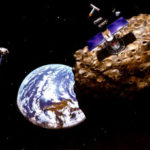 NASA recently approved a mission to visit the metallic space rock, which orbits the sun in the main asteroid belt between Mars and Jupiter. The mission — the first to a metal asteroid — could reveal secrets about our solar system’s earliest days while setting the stage for a future space mining industry.
NASA recently approved a mission to visit the metallic space rock, which orbits the sun in the main asteroid belt between Mars and Jupiter. The mission — the first to a metal asteroid — could reveal secrets about our solar system’s earliest days while setting the stage for a future space mining industry.
“We think the metallic class of asteroids are the remains of ancient cores of planets,” said Jim Bell, a planetary scientist at Arizona State University in Tempe and deputy principal investigator of NASA’s Psyche mission.
Bell said the asteroid, known officially as (16) Psyche, could be the core of a nascent planet that lost its outer layers after colliding with another object billions of years ago. “That’s what we think this is — the exposed core of an ancient planetesimal from the early solar system,” he said, adding that studying Psyche up close could give scientists a better understanding of what lies at the center of our own planet.
“We can’t go visit the Earth’s core because the pressures and temperatures are too high,” he said. “The same goes for the core of Mars, the moon and other planets. But lucky for us, we think there is a core out there in the main asteroid belt that is exposed for us to view.”
How 16 Psyche Got Its Name
The asteroid was named after the nymph Psyche, who married Cupid but was put to death by Venus. At Cupid’s request, however, Jupiter made Psyche immortal.
Overview
One of the most intriguing targets in the main asteroid belt, 16 Psyche is a giant metal asteroid, about three times farther away from the sun than is the Earth. Its average diameter is about 140 miles (226 kilometers) — about one-sixteenth the diameter of Earth’s Moon or about the distance between Los Angeles and San Diego. Unlike most other asteroids that are rocky or icy bodies, scientists think the M-type (metallic) asteroid 16 Psyche is comprised mostly of metallic iron and nickel similar to Earth’s core. Scientists wonder whether Psyche could be an exposed core of an early planet, maybe as large as Mars, that lost its rocky outer layers due to a number of violent collisions billions of years ago.
Astronomers on Earth have studied 16 Psyche in visible and infrared wavelengths, as well as radar, which suggest Psyche is shaped somewhat like a potato. Observations indicate that its dimensions are 173 miles by 144 miles, by 117 miles (that’s 279, 232 and 189 kilometers, respectively). Psyche orbits the Sun between the orbits of Mars and Jupiter at a distance ranging from 235 million to 309 million miles (378 million to 497 million kilometers) from the Sun. That’s 2.5 to 3.3 Astronomical Units (AU), with 1 AU being the distance between Earth and the Sun. Psyche takes about five Earth years to complete one orbit of the Sun, but only a bit over four hours to rotate once on its axis (a Psyche “day”).
This intriguing asteroid is now the primary target of the Psyche mission. Targeted to launch in August of 2022, the Psyche spacecraft would arrive at the asteroid in early 2026, following a Mars gravity assist in 2023. Over 21 months in orbit, the spacecraft will map and study 16 Psyche’s properties using a multispectral imager, a gamma ray and neutron spectrometer, a magnetometer, and a radio instrument (for gravity measurement). The mission’s goal is, among other things, to determine whether Psyche is indeed the core of a planet-size object.
The Psyche mission will be the first mission to investigate a world of metal rather than of rock and ice. Deep within rocky, terrestrial planets—including Earth—scientists infer the presence of metallic cores, but these lie unreachable below planets’ rocky mantles and crusts. Because scientists cannot see or measure Earth’s core directly, Psyche offers a unique window into the violent history of collisions and accretion that created terrestrial planets.
The solar-powered Psyche spacecraft will launch in 2022 and arrive at the asteroid on Jan. 31, 2026. It will study Psyche and map its surface for 21 months, using a trio of scientific instruments: a magnetometer to measure what may be left of the asteroid’s magnetic field; a spectrometer to map its chemical composition; and a camera to snap high-resolution images of the asteroid.
Angel Abbud-Madrid, director of the Center for Space Resources at the Colorado School of Mines in Golden, said he’s eager to see what the close-up look at Psyche will reveal about metal asteroids, which are relatively rare in the solar system.
“We know very little about them,” Abbud-Madrid said. “We’ve only seen these asteroids in telescopes, so these are very unique objects.”
If you want to get rich in your own lifetime, it might make sense to keep an eye on the early movers
These companies appear active in the exploitation of asteroid mining:
- Planetoid Mines Corporation
- NEO Resource Atlas (NEORA)
- Deep Space Industries
- Planetary Resources
- Moon Express
- Kleos Space
- TransAstra
- Aten Engineering
- Air Space and Beyond (ASB)
- OffWorld
- Asteroid Mining Corporation Ltd. UK
This is a table of potential value:
| Asteroid | Est. Value (US$billion) | Est. Profit (US$billion) | Δv (km/s) | Composition |
|---|---|---|---|---|
| Ryugu | 83 | 30 | 4.663 | Nickel, iron, cobalt, water, nitrogen, hydrogen, ammonia |
| 1989 ML | 14 | 4 | 4.889 | Nickel, iron, cobalt |
| Nereus | 5 | 1 | 4.987 | Nickel, iron, cobalt |
| Bennu | 0.7 | 0.2 | 5.096 | Iron, hydrogen, ammonia, nitrogen |
| Didymos | 62 | 16 | 5.162 | Nickel, iron, cobalt |
| 2011 UW158 | 7 | 2 | 5.189 | Platinum, nickel, iron, cobalt |
| Anteros | 5,570 | 1,250 | 5.440 | Magnesium silicate, aluminum, iron silicate |
| 2001 CC21 | 147 | 30 | 5.636 | Magnesium silicate, aluminum, iron silicate |
| 1992 TC | 84 | 17 | 5.648 | Nickel, iron, cobalt |
| 2001 SG10 | 3 | 0.5 | 5.880 | Nickel, iron, cobalt |
| Psyche | 27.67 | 1.78 | – | Nickel, iron, cobalt, gold [58] |
Doing a quick ‘Daydreaming with Spreadsheets’ exercise, I came up with the following skeleton of a business plan:
Assume your venture capital backers require 25% ROI on the first delivery of NEA-mined material. Plan to mine gold and platinum, the most valuable per unit mass materials available. Per the table above, that requires 5.189 km/s delta V to get to 2011 UW158. Assume further you can fit a nearly-fully fueled Centaur upper stage into the payload fairing of a Falcon 9 and lift a combined total of 23 mt (stage, fuel, and mining equipment payload) to LEO to be the transport to the asteroid and back again. An un-refueled round trip can’t carry enough payload back to make the combined cost of the Falcon launch ($50 m est) and Centaur acquisition ($15 m est) back, let alone net the $16.3 m first trip profit. Therefore lets haul up some in-situ resource utilization equipment to make hydrogen and oxygen to refuel the Centaur while the mining equipment does its work. The good news is that the ISRU and mining equipment can stay on the asteroid while the Centaur is loaded with and returns the mined (and at least semi-refined) material. For an extendable-nozzle RL10 with 465 s ISP, the Centaur has enough performance to make the 5.189 km/s delta V journey at a mass ratio of 3.11 or better. That means you could take 5.1 mt of ISRU and mining equipment up, refuel the Centaur to its full 20.8 mt fuel capacity, and carry 7.6 mt of mined material back to LEO for delivery. Nickel, iron, and cobalt current spot prices are not high enough to make a profit on the mission, but a payload of platinum or gold would clear the 25% ROI requirement by an order of magnitude. To put it another way, as long as you can sell your payload for around $11/gram, you hit your profit targets. That price is FOB LEO, the buyer is responsible for transportation to place of utilization (ISS, or maybe drop it gently on Australia for recovery…) From there out you can run the Centaur back and forth as many times as you can refuel, load it, and light the RL10, making $80 m less LEO refuel costs per trip.
Disclaimer: all of the above is assuming whole herds of spherical cows and counting bushels of eggs before they are hatched…
Well done. Mr. Smith! Expect to be vertically integrated into the Elon Musk Mining Operation. Only…you won’t know which way is up will you?